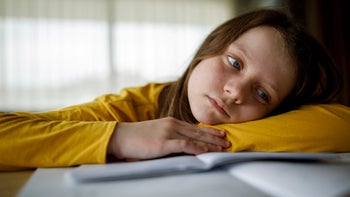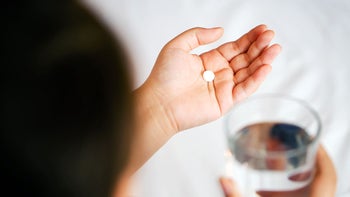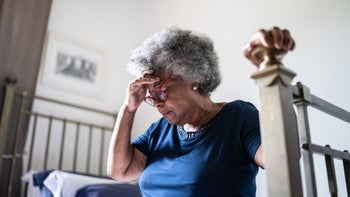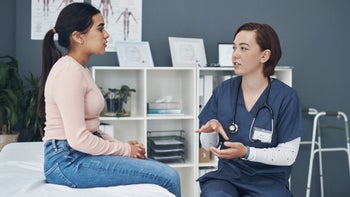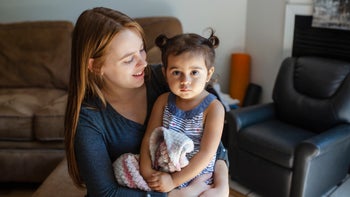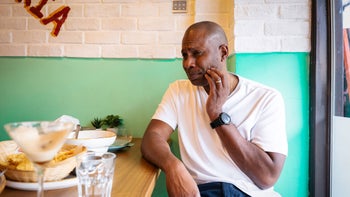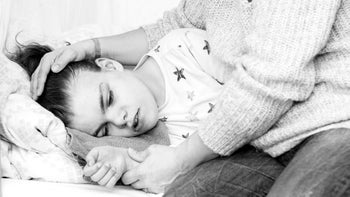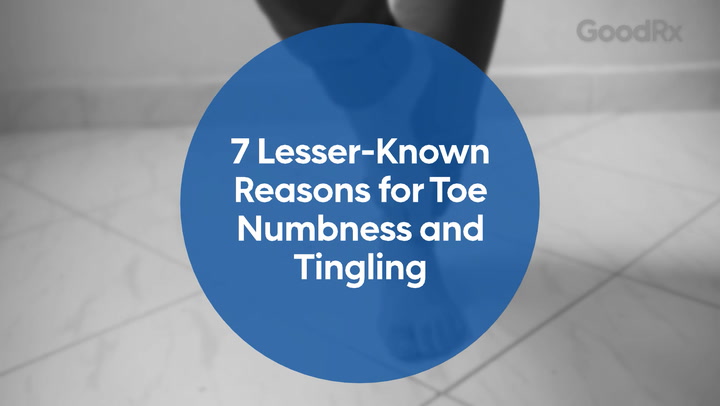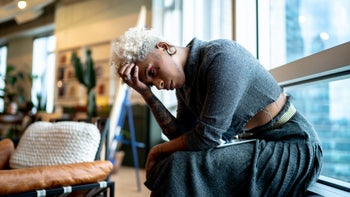
7 Facial Exercises for Bell’s Palsy
Key takeaways:
Bell's palsy is a neurological condition that causes paralysis or weakness on one side of the face. Experts think the cause may be a virus, bacterial infection, or autoimmune disorder.
Treatment for Bell’s palsy includes steroids, antiviral medication, and exercises. Facial exercises can help activate nerves and strengthen muscles.
Most people with Bell's palsy will completely recover within 6 months.
Table of contents

Bell's palsy is a condition that causes muscle weakness or paralysis on one side of the face. This neurological condition affects up to 40,000 people in the U.S. every year. Although it can be alarming, most people will have a complete recovery.
Experts say that seeing a healthcare provider within 72 hours can help speed recovery. Treatment usually includes steroids and exercises. Facial exercises can strengthen muscles and stimulate nerves.
What are the symptoms of Bell's palsy?
Bell's palsy occurs when the seventh cranial nerve is inflamed or compressed. This nerve controls facial movement and expression. It also controls most of the taste in your tongue and sensation behind the ear.
Search and compare options
It's not clear what causes the nerve damage. Experts think the trigger may be a virus, immune disorder, or bacterial infection. Bell's palsy develops fairly quickly — within 48 to 72 hours.
The main symptoms of Bell’s palsy include:
Weakness or drooping on one side of the face
Difficulty closing one eye, resulting in eye dryness or excessive tearing
Difficulty making facial expressions
Difficulty chewing, eating, and drinking
Drooling on one side
Pain in the face, jaw, or behind the ear
Difficulty tasting or abnormal taste sensations
Difficulty saying certain words
Sensitivity to loud noises
Muscle twitches in the face
If you show signs of Bell's palsy, get medical care immediately. In addition to starting treatment, a healthcare provider can rule out other conditions that look like Bell's palsy, including stroke.
Bell's palsy most commonly develops in people between the ages of 15 and 45. But there are several other risk factors, such as pregnancy, diabetes, or upper respiratory illness.
How do facial exercises help with Bell's palsy?
Your healthcare provider may recommend facial exercises as part of your treatment. Exercises for Bell's palsy have been shown to stimulate facial nerves, restore muscle strength, and improve movement and coordination. A 2021 review found that people who did facial exercises saw improved function, facial symmetry, and faster recovery from Bell's palsy.
Read more like this
Explore these related articles, suggested for readers like you.
Talk to your healthcare provider before you try facial exercises for Bell's palsy at home. Your provider may recommend physical therapy, including guided exercises or hands-on treatment for severe cases.
What are the best facial exercises for Bell’s palsy?
The best exercises for Bell's palsy involve controlled movements that engage multiple facial muscles. For best results, keep the following tips in mind:
Perform the exercises in front of a mirror so you have visual feedback.
Try to apply emotions with the movement when practicing facial expressions. For example, think of something that makes you happy as you practice smiling. Or imagine yourself being surprised when you try to raise your eyebrows. This technique is called mime therapy. And it may lessen symptoms of Bell's palsy.
Work your way up to the recommended reps. Stop if you start feeling fatigued, frustrated, or have unwanted muscle contractions in other parts of your face. These are signs that you need to rest.
Consider doing an ice massage first to help stimulate the muscles and decrease nerve inflammation. You can wrap an ice cube in a cloth and rub it from your lips, over your cheek, and up to your ear. You can also do this inside your mouth along the same path for around 5 minutes.
And remember to get your healthcare provider’s OK before you practice these facial exercises.
1. Eyebrow movement
This eyebrow exercise works the muscles that help with facial expressions, including raising your eyebrows (for emotions such as shock and surprise) and frowning. It also helps prevent eye drooping so your eyes look more symmetrical.
Step 1: Keep your eyes open as you lift both eyebrows up. You can place your index finger above your eyebrow to help lift your affected eye. Lower your eyebrows.
Step 2: Lift and lower your eyebrows 15 times.
Step 3: Frown and try to draw your eyebrows together. The eyebrow on your affected side probably won't move much at first (and that's OK). You can use your finger to help bring your eyebrow in.
Step 4: Do 10 reps of the frowning exercise for 1-3 sets.
2. Eye opening and closing
Eye opening and closing exercises work the muscles that allow you to blink. Activating these muscles can help prevent dry eyes.
Step 1: Open both eyes as wide as you can. You can imagine being surprised or shocked to help encourage this movement.
Step 2: Close both eyes as tightly as you can, creating wrinkles around your eyes.
Step 3: Continue opening wide and closing tightly 15-30 times. Repeat 1-3 sets.
3. Smiling exercise
This smiling exercise works muscles in your lips, cheeks, and jaw to help with everyday activities such as eating, drinking, and smiling.
Step 1: Do a wide, open-mouthed smile, using your finger to assist by pulling the affected side of your mouth up as needed. Hold for 5 seconds.
Step 2: Repeat 10 times.
Step 3: Do a close-mouthed smile, using your finger to assist on the affected side as needed.
Step 4: Repeat 10 times for 1-3 sets.
4. Lip pursing
Lip pursing or pouting exercises work the muscles around your lips to help improve mobility with eating, drinking, and talking.
Step 1: Pucker your lips and move them out as if you are kissing or whistling. You can put your index finger and thumb in the corner of your mouth on the affected side to help pucker your lips.
Step 2: Hold briefly and relax back to the starting position.
Step 3: Repeat 15 times for 1-3 sets.
5. Cheek puffing
This cheek puffing exercise works the muscles in your cheeks and lips to encourage facial movement.
Step 1: Keep your lips together, and blow out as you puff one cheek out as far as you can. Hold for a few seconds and relax.
Step 2: Repeat step 1 on the other side to complete one rep. The cheek on your affected side won't be as full as your unaffected side at first. But it will improve as you regain strength.
Step 3: Repeat 15 times for 1-3 sets.
6. Nostril flaring
This nostril flaring exercise engages muscles around your nose to help restore facial symmetry.
Step 1: Flare both sides of your nostrils out. You can place your finger along the side of your nostril on the affected side to help pull it out.
Step 2: Repeat 10 times for 1-3 sets.
7. Tongue movement
Tongue exercises can rebuild strength and function, making it easier to eat, drink, and talk.
Step 1: Stick your tongue out and move it up toward the ceiling. Then, point your tongue down toward your chin.
Step 2: Continue lifting and lowering your tongue 10 times. Complete 1-3 sets.
Step 3: Place your tongue on the roof of your mouth behind your front teeth.
Step 3: Move it along the roof of your mouth and back toward your molars.
Step 4: Repeat this sequence 10 times for 1-3 sets.
What other treatments can you combine with exercises for Bell’s palsy?
Your healthcare provider will prescribe an oral corticosteroid as a first-choice treatment for Bell's palsy. Steroids may decrease inflammation to help you heal.
Your provider might also prescribe an antiviral medication to help prevent involuntary facial muscle contractions (synkinesis). You should not take antivirals without steroids, as this is not effective.
Treatment for Bell's palsy may also include a short course of over the-counter pain relievers, such as aspirin, acetaminophen (Tylenol), or ibuprofen (Advil, Motrin). Eye drops can soothe dry eyes if you can’t blink. Surgery is rarely recommended for Bell's palsy.
Try to rest and decrease stress to help you recover. Remember, the outlook for Bell's palsy is very good. Most people will start seeing improvement within 2 to 3 weeks and often completely recover within 3 to 4 months.
Your recovery time depends on how severe your symptoms are. Up to 7 in 10 people with complete paralysis will recover in 6 months, while 94% of those with incomplete paralysis will recover in that same time frame.
The bottom line
Bell's palsy is a neurological condition that causes weakness or paralysis on one side of the face. See a healthcare provider right away if you have signs of Bell’s palsy, like facial weakness on one side. They can rule out other conditions, such as stroke, and prescribe steroids to reduce facial nerve inflammation. Although the exact cause is unknown, most people recover within 6 months.
To help speed up your recovery, your treatment might also include physical therapy and facial exercises for Bell's palsy. Targeted movements can strengthen facial muscles, increase mobility, and improve coordination.
Why trust our experts?
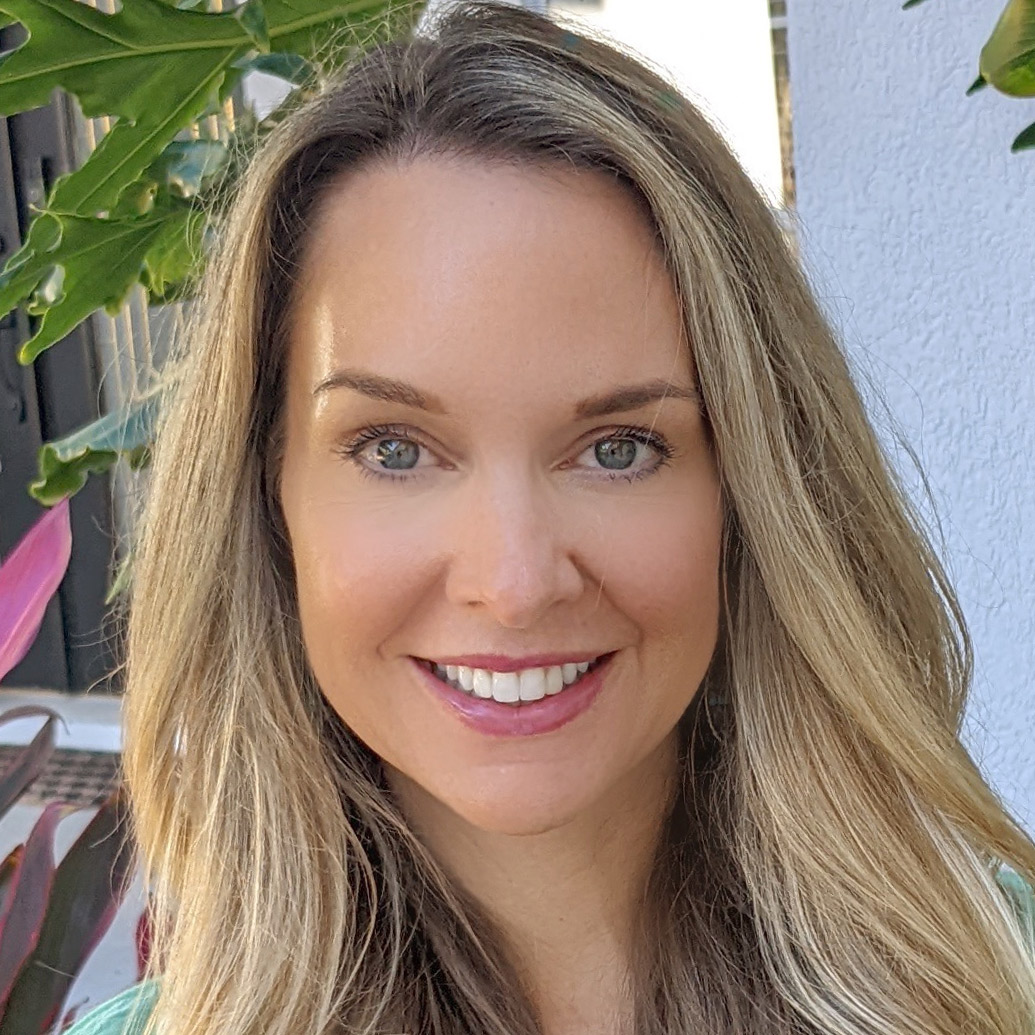
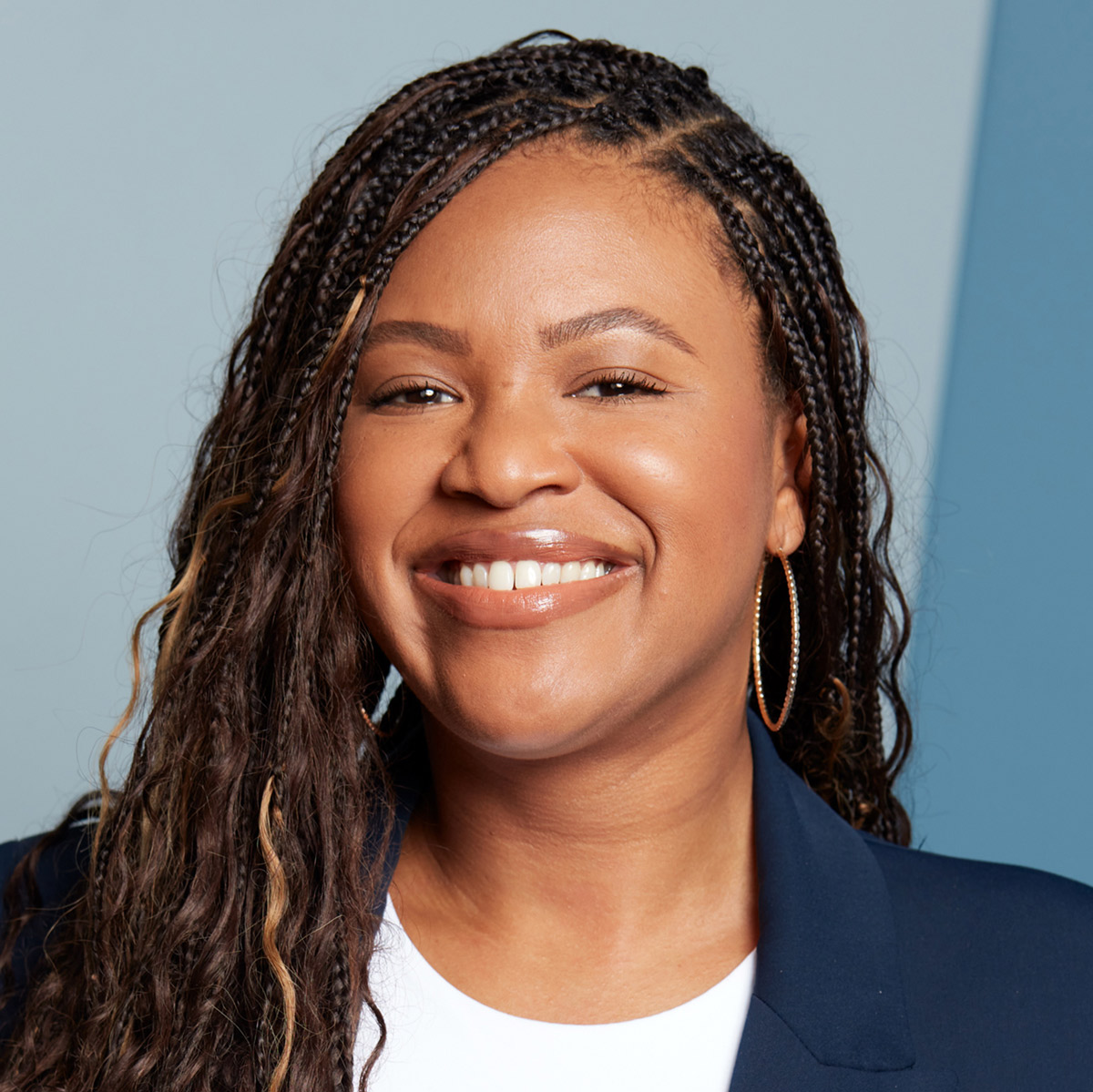
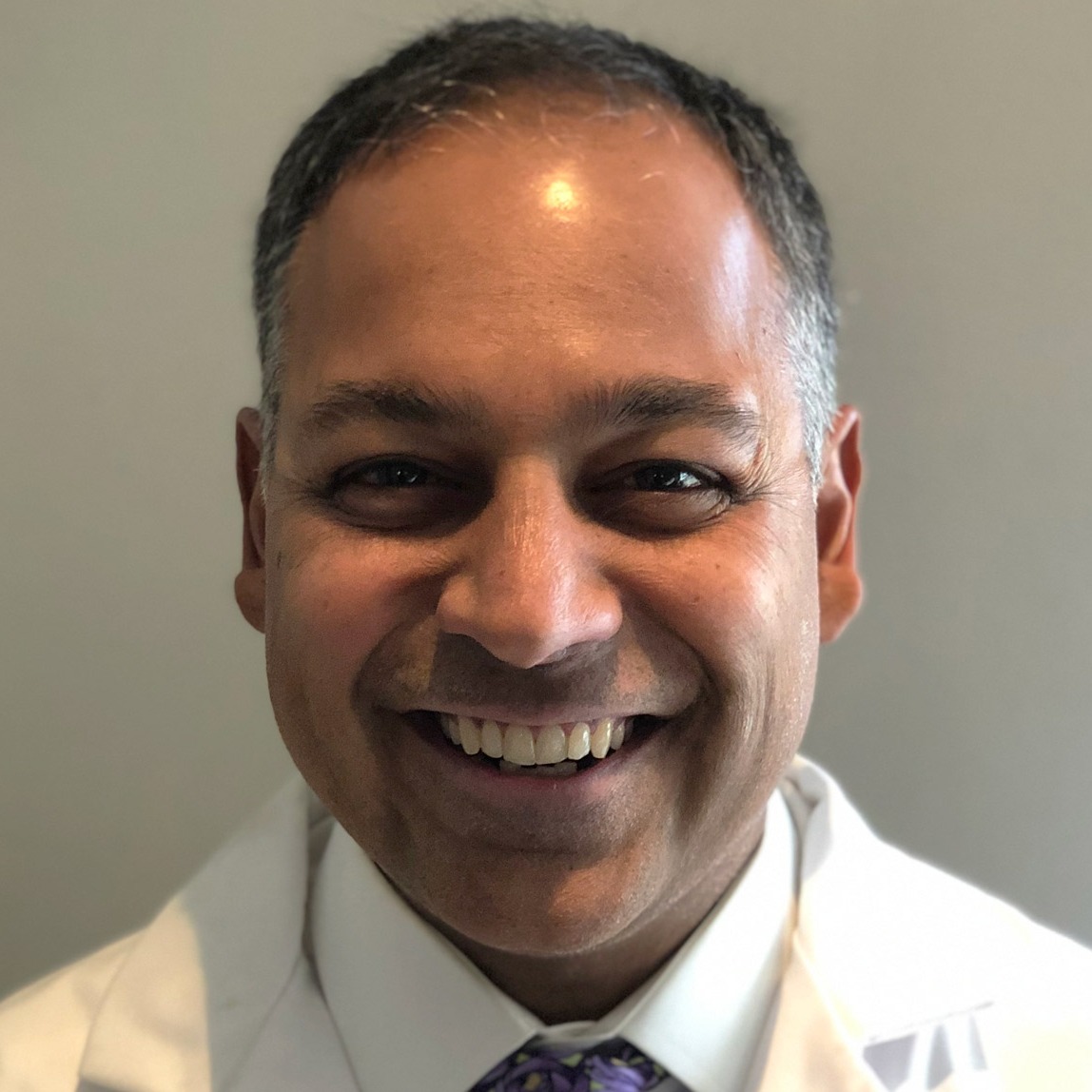
References
AskDoctorJo. (2016). Bell’s palsy exercises – ask Doctor Jo [video]. YouTube.
Baugh, R. F., et al. (2013). Clinical practice guideline: Bell’s palsy. Otolaryngology–Head and Neck Surgery.
Beurskens, C. H. G., et al. (2006). Mime therapy improves facial symmetry in people with long-term facial nerve paresis: A randomised controlled trial. Australian Journal of Physiotherapy.
Dalrymple, S. N., et al. (2023). Bell palsy: Rapid evidence review. American Family Physician.
Dulak, D., et al. (2023). Neuroanatomy, cranial nerve 7 (facial). StatPearls.
Gatidou, A. M., et al. (2021). Physiotherapy management of Bell’s palsy - A review of evidenced based physiotherapy practice. International Journal of Advanced Research in Medicine.
Kaiser Permanente. (n.d.). Bell’s palsy: Facial droop.
Kanika, et al. (2023). Effectiveness of facial palsy protocol among patient with mucormycosis following COVID-19: A case study. Heliyon.
Kate Physiotherapist with Braid. (2022). Bells palsy exercises supporting recovery [video]. YouTube.
Khan, A. J., et al. (2022). Physical therapy for facial nerve paralysis (Bell's palsy): An updated and extended systematic review of the evidence for facial exercise therapy. Clinical Rehabilitation.
Monini, S., et al. (2016). Role of Kabat rehabilitation in facial nerve palsy: A randomised study on severe cases of Bell's palsy. Acta Otorhinolaryngologica Italica.
National Institute of Neurological Disorders and Stroke. (2023). Bell’s palsy.
National Organization for Rare Disorders, Inc. (2022). Bell’s palsy.
Rehab My Patient. (2013). Open eyes wide assisted [video]. YouTube.
Rehab My Patient. (2013). Smile one sided assisted [video]. YouTube.
Rehab My Patient. (2020). Senior: Lip pout [video]. YouTube.
Rehab My Patient. (2020). Senior: Puffa, one side [video]. YouTube.
Rehab My Patient. (2020). Senior: Strengthen your tongue muscles [video]. YouTube.








